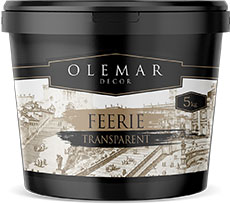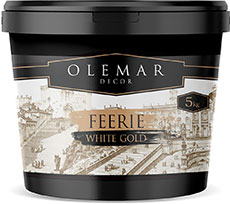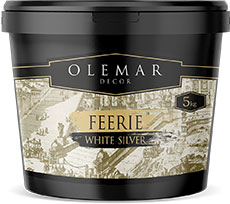Apply tinted DECOR PRIMER on the surface that was previously treated with D 11 ELFâ„¢ primer. Tinting can be done using universal dyes manually by color chart or using a computer tinting system. Wait until it’s completely dry. Or apply the decorative base coat according to the application technology of the selected product when applying FEERIE TRANSPARENT base. The material should be stirred thoroughly.
IMPORTANT: do not use an electric mixer for stirring so as not to shatter the structure of the material.
Apply the product using a flat wide brush by making random movements and spreading it evenly over the surface.
Group the crystals on the surface using a dry brush, thus obtaining the desired decorative effect.
It is possible to get other interesting design solutions by processing the surface with plastic bevel, slightly pressing the crystals and spreading them over the surface additionally. You can tint FEERIE base as well as mix FEERIE bases of different colors together for additional decorative effects.





